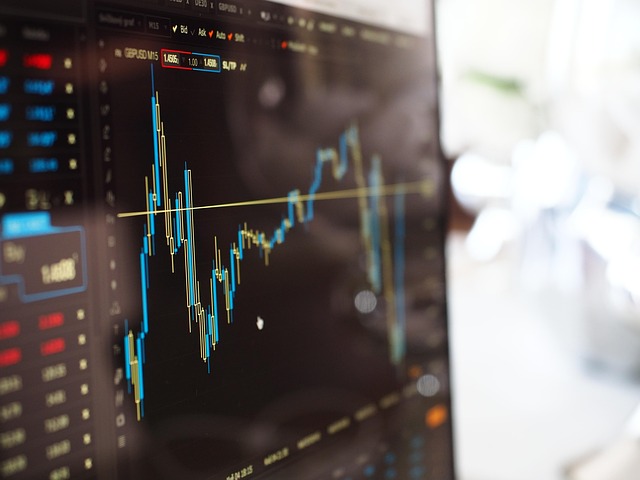What Is Binance Spot Trading: Complete Guide
Author: Jameson Richman Expert
Published On: 2025-10-27
Prepared by Jameson Richman and our team of experts with over a decade of experience in cryptocurrency and digital asset analysis. Learn more about us.
What is Binance spot trading? This comprehensive guide explains the fundamentals, mechanics, fees, risks, and best practices of spot trading on Binance. Whether you’re a beginner wanting to place your first BTC buy or an intermediate trader optimizing execution and risk management, you’ll find actionable steps, examples, and reliable resources to trade on Binance’s spot market confidently.

Overview: What Is Binance Spot Trading?
Spot trading refers to the buying and selling of cryptocurrencies for immediate settlement on an exchange. When you open a spot trade on Binance, you buy (or sell) the underlying asset — like BTC, ETH, or XRP — and the trade settles almost instantly into your exchange wallet. The price you execute at is the spot price, which reflects the current market value determined by Binance’s order book and liquidity.
Spot trading is different from derivatives such as futures or perpetual contracts, which are leveraged instruments and settle via contracts rather than direct ownership. For a deeper discussion on derivatives and how they differ from spot markets, see this analysis on futures trading considerations: “Is Futures Trading on Binance Halal? Reddit in 2025 — An In-depth Analysis.” (https://cryptotradesignals.live/is-futures-trading-on-binance-halal-reddit-in-2025-an-in-depth-analysis/320124)
How Binance Spot Trading Works
Binance’s spot market is an electronic order-driven exchange. Buyers and sellers place orders into an order book. Trades occur when buy orders (bids) match sell orders (asks). Key components include:
- Order Book: Lists active bids and asks by price level.
- Order Types: Market, limit, stop-limit, OCO (one-cancels-the-other), and more.
- Matching Engine: Automatically pairs compatible orders based on price-time priority.
- Settlement: Immediate transfer of the cryptocurrency and corresponding fiat or stablecoin in your Binance spot wallet.
To open an account and start spot trading, you can register on Binance here: Open a Binance account.
Key Features and Order Types on Binance Spot
Spot traders on Binance have access to a variety of features designed to support different strategies and skill levels:
- Market Orders: Execute immediately at the best available price — useful for quick entries or exits.
- Limit Orders: Specify the exact price you’re willing to buy or sell — useful for precise execution and lower fees (maker fees).
- Stop-Limit Orders: Combines a stop price that activates a limit order — commonly used for risk management.
- OCO Orders: Place a target and stop-loss simultaneously; one cancels the other when executed.
- Spot Trading Pairs: Trade crypto-to-crypto pairs (e.g., ETH/BTC) or crypto-to-stablecoin/fiat pairs (e.g., BTC/USDT, ETH/USD).
Binance uses a maker-taker fee model. Makers (limit orders adding liquidity) often enjoy lower fees than takers (market or limit orders consuming liquidity). Fees, discounts, and VIP tiers change over time — check Binance’s fee schedule or your account fee page before trading.

Step-by-Step: How to Place a Spot Trade on Binance
- Create and verify your account: Register at Binance and complete KYC verification for higher limits and withdrawals: Binance registration.
- Deposit funds: Transfer cryptocurrency from a wallet or deposit fiat via supported payment rails or P2P.
- Choose a trading pair: For example, if you want to buy Ethereum with USDT, select ETH/USDT.
- Select order type: Market for instant execution or limit to set your price.
- Enter amount and execute: Confirm order details, fees and execute.
- Secure your holdings: Consider moving large balances to cold storage or hardware wallets for long-term holdings.
Example: Buying ETH with USDT
- Choose ETH/USDT market.
- Place a limit order at your target price (e.g., 1,850 USDT) or a market order for immediate fill.
- After execution, ETH appears in your Spot Wallet. You now own the underlying ETH and can transfer, hold, or trade it.
For market analysis and trade ideas specifically for ETH, see this technical analysis and price outlook: ETH/USD Technical Analysis — Ethereum Price Outlook 2025.
Spot vs Futures vs Margin: Which to Use?
Understanding the difference is crucial for risk management:
- Spot: Direct ownership, no leverage by default (you can use cross or margin accounts for leverage). Lower risk relative to leveraged derivatives.
- Futures/Perpetuals: Contracts that allow leverage. Higher potential returns and higher risk of liquidation.
- Margin Trading: Borrow funds to increase exposure on spot trades; introduces interest costs and liquidation risk.
If you want a clear comparison of derivatives and the community debate around their permissibility or suitability, read the in-depth discussion here: Is Futures Trading on Binance Halal? — Analysis.
Fees, Liquidity, and Slippage
Three practical concepts every spot trader must manage:
- Trading Fees: Check Binance’s current maker/taker fees and VIP tiers. Using BNB to pay fees can yield discounts.
- Liquidity: High-liquidity pairs (e.g., BTC/USDT, ETH/USDT) have tighter bid-ask spreads and lower slippage, making large trades easier to execute.
- Slippage: The difference between expected price and executed price. Use limit orders or split large orders to reduce slippage when the market is thin.
Investopedia explains slippage and its causes in detail — helpful background reading: What Is Slippage?

Security, Account Verification, and Regulatory Considerations
Security best practices and compliance are non-negotiable:
- KYC and Verification: Binance requires identity verification for most users. Complete KYC to unlock higher withdrawal limits and services.
- Two-Factor Authentication (2FA): Enable Google Authenticator or SMS 2FA for account security.
- Withdrawal Safeguards: Use withdrawal whitelists and email confirmations.
- Regulation: Exchanges operate under different regional rules—confirm Binance’s services and licensing in your jurisdiction. For insights about other exchanges’ operational structures and verification, this article on Bybit’s headquarters and verification procedures is useful: Where Is Bybit Headquarters — Location, Structure and How to Verify.
If you choose other platforms, use secure referrals and verify the exchange’s reputation and security controls. Alternative exchanges with registration links: MEXC (Register at MEXC), Bitget (Register at Bitget), Bybit (Register at Bybit).
Taxes: What Traders Need to Know
Spot trades are typically taxable events in many jurisdictions. General rules:
- Capital Gains: Selling crypto for fiat or swapping one crypto for another may trigger capital gains/losses, calculated as sale price minus cost basis.
- Income Events: Staking rewards, airdrops, mining, and some DeFi earnings can be taxable as income.
- Record-Keeping: Track timestamps, amounts, and prices for each trade to compute gains accurately.
For US residents, the IRS provides guidance on virtual currencies: IRS — Virtual Currencies. If you’re in the UK, review HMRC guidance on cryptoassets.
Risk Management and Best Practices for Binance Spot Trading
Solid risk management is what separates consistent traders from speculators. Key best practices:
- Position Sizing: Risk only a small percentage of your capital on any single trade (commonly 1–3%).
- Use Stop-Loss Orders: Protect downside by setting logical stop-loss levels based on volatility and support levels.
- Diversify: Don’t put all funds into one asset; spread risk across several uncorrelated holdings.
- Avoid Over-Leveraging: Keep most activity in spot until you master leveraged products.
- Paper Trade First: Practice strategies in demo or with small sizes before scaling up.

Common Beginner Mistakes and How to Avoid Them
New traders frequently make these errors:
- Chasing FOMO: Buying at local tops after price surges. Solution: wait for pullbacks or buy with a plan (DCA — dollar-cost averaging).
- Poor Risk Management: Not using stop-loss or risking too much per trade. Solution: predefine risk and exit rules.
- Ignoring Fees and Slippage: Over-trading in small accounts can erode returns. Solution: optimize order type and consider fee discounts (BNB).
- Lack of Diversification: Overexposure to a single coin. Solution: allocate across assets and re-balance periodically.
Advanced Tips: Tools, Charts, and Order Execution
As you progress, leverage tools and data to improve execution and edge:
- Order Slicing: Break large orders into smaller tranches to reduce market impact.
- Use Limit Orders for Entry: Better control over price and can earn maker rebates.
- Charting and Indicators: Learn support/resistance, moving averages, RSI, VWAP, and volume profile on platforms like TradingView (TradingView).
- On-Chain and Sentiment Data: Monitor exchange inflows/outflows and social sentiment for context. Community analysis and coin-specific news can meaningfully impact spot price (see this discussion on XRP sell-off causes and recovery strategies: XRP Sell-off — Causes, Impact and Recovery Strategies).
How Spot Trading Affects Broader Crypto Markets
Spot market activity directly influences prices because trades involve actual supply changes on exchanges. Large spot buys can drive prices up as order books thin, while massive sell-offs increase supply and pressure prices. Spot liquidity is also a cornerstone for derivatives: low spot liquidity can widen futures funding rates and increase volatility.

Choosing the Right Exchange for Spot Trading
Binance is one of the largest global spot exchanges by volume and pair variety, but alternatives exist with their own strengths. Consider:
- Liquidity and Pairs: Choose exchanges with deep liquidity in pairs you trade often.
- Security Record: Exchanges with audited security practices, insurance funds, and transparent teams score higher.
- Fees and Discounts: Compare maker/taker fees and whether native tokens like BNB offer discounts.
- Local Regulations: Ensure the exchange operates legally in your jurisdiction.
Alternative exchanges to consider (with registration links):
- MEXC — known for listing a wide range of altcoins.
- Bitget — strong derivatives and copy trading features.
- Bybit — major derivatives venue with spot services.
If you consider off-exchange custody (hardware wallets), research devices from trusted manufacturers like Ledger or Trezor and transfer only what you plan to trade on exchanges.
Real-World Example: Trading ETH Spot vs Holding
Suppose you have 5,000 USDT and are considering ETH.
- Option A — Buy and hold: Place a limit order at 1,850 USDT for ETH/USDT. If filled, you own ETH and incur spot trading fees; you can hold long-term and avoid liquidation risk.
- Option B — Trade actively: Use technical levels to enter and set a stop-loss at an acceptable level. Active trading may increase fees and require more attention to slippage.
Use the ETH technical analysis resource for insights into potential mid-term price behavior: ETH/USD Technical Analysis — Ethereum Price Outlook 2025.
Frequently Asked Questions (FAQ)
Is spot trading on Binance safe?
Binance is one of the largest exchanges with significant liquidity and security investments, but no platform is risk-free. Use 2FA, withdrawal whitelists, and move long-term holdings to cold storage. Check Binance’s official security and policies pages and keep updated on local regulations.
How much does Binance charge for spot trades?
Fees vary by maker/taker status, 30-day volume, and whether you use native token discounts (BNB). Fee schedules change, so view the up-to-date fee structure on Binance’s official pages within your account.
Can beginners start on spot before trying derivatives?
Yes. Spot trading involves owning the asset and usually carries less risk than leveraged derivatives. Beginners should learn spot basics and risk management before using margin or futures.
What should I do after buying crypto on Binance spot?
Options: hold on the exchange (ensure security), transfer to a personal wallet for long-term storage, use DeFi services, or trade spot pairs. Always consider security, tax consequences, and personal risk tolerance.

High-Authority Resources and Further Reading
- Binance official site and help center for account-specific details and fee schedules: Register with Binance.
- General background on spot vs derivatives: Spot Market — Wikipedia.
- Regulatory/tax guidance for U.S. taxpayers: IRS — Virtual Currencies.
- Market structure and trading definitions: Investopedia — Slippage.
Conclusion: Is Spot Trading on Binance Right for You?
Spot trading on Binance provides direct ownership of crypto assets, deep liquidity on major pairs, and a variety of order types to suit many trading styles. It’s usually the recommended starting point for new traders due to lower complexity relative to derivatives. However, success hinges on sound risk management, understanding fees and slippage, and keeping funds secure.
If you’re ready to begin, register with Binance here: Open a Binance account. If you want alternatives or to diversify where you trade, consider MEXC (Register at MEXC), Bitget (Register at Bitget), or Bybit (Register at Bybit).
For market-specific trading ideas and research, explore these related analyses: ETH technical outlook (ETH/USD Technical Analysis — 2025), futures vs spot considerations (Futures Trading on Binance — In-depth Analysis), exchange verification details (Bybit — Headquarters and Verification), and token-specific market events like XRP sell-offs (XRP Sell-off — Causes and Recovery).
Start small, trade responsibly, and keep learning — spot trading can be a powerful and relatively straightforward way to participate in the crypto markets when approached with discipline and a plan.